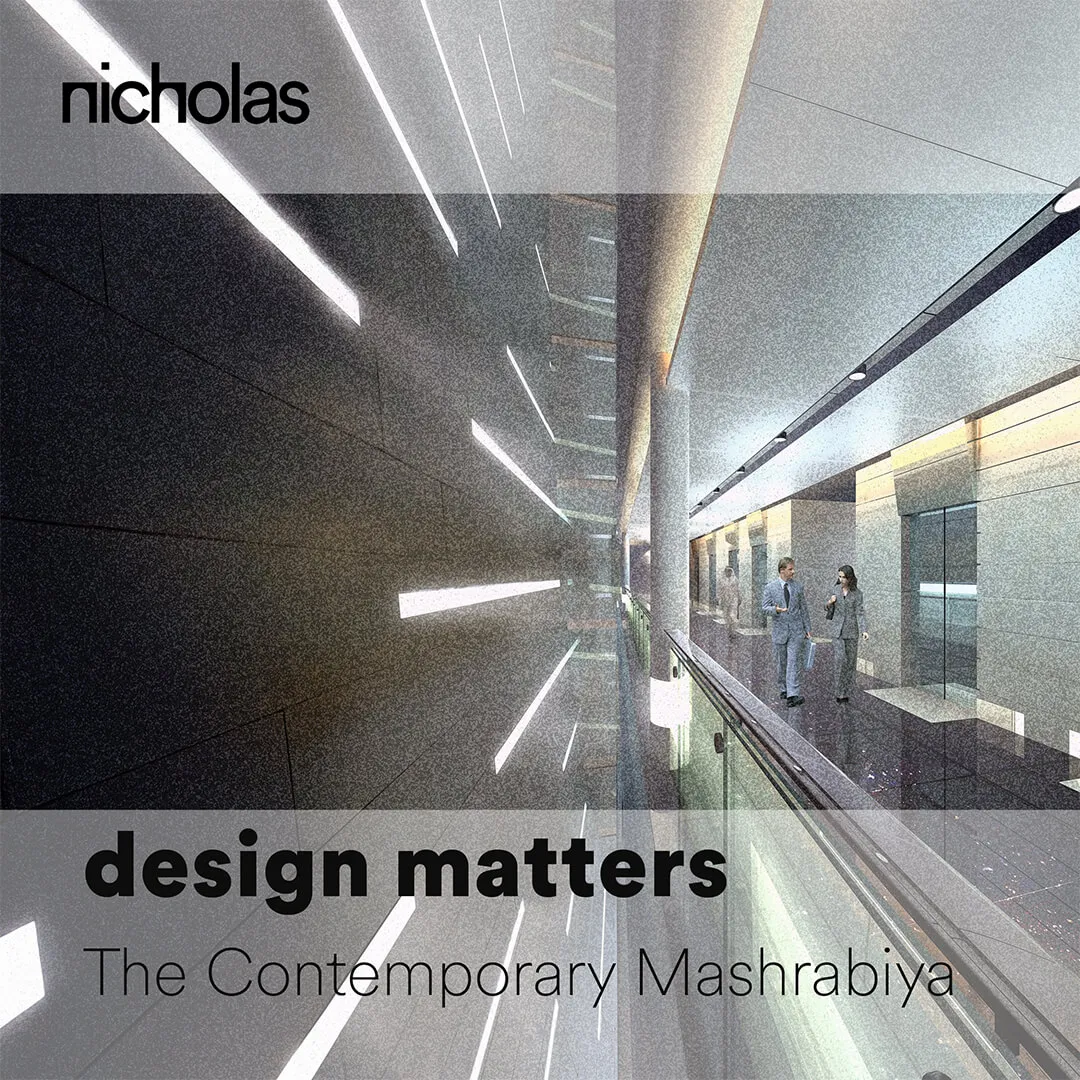
The mashrabiya (مشربية) is an architectural device found throughout the Arab world including North Africa, the Levant and Jeddah. Its use became widespread during the Ottoman period (1517-1805).
A type of projecting oriel window enclosed with carved wooden latticework, typically located on the upper floors of a building and adjoining the street or an internal courtyard, it is traditionally used for passive cooling by catching breezes. Basins of water could be placed in it to facilitate evaporative cooling.
In addition to increasing air flow and reducing the temperature of the air current, mashrabiya provide privacy and reduce heat and glare by modulating the amount of sunlight entering the building. It is the screening function of the mashrabiya which is, in my view, its most recognisable characteristic.
I advocate learning from the marhrabiya and reintroducing it in contemporary ways. The accompanying image shows the atrium lift lobby of a high-rise office building in Kuwait, which I designed. The tower takes the form of a narrow slab-block, facing North towards the ocean.
The building’s services and circulation spaces are oriented towards the South, to desert. The atrium’s skin, which faces the sun for most of the day, is conceived as a “contemporary mashrabiya”, dappled with the play of diffuse natural light and shielded from the heat.
Being glazed, the “contemporary mashrabiya” is not directly ventilating the building – although indirectly it does, because the atrium it encloses allows conditioned air to be pulled up through the building via the “stack effect”.
Air is introduced mechanically to the office floors at the glazing line of the northern façade and exhausted at the top of the southern façade.
By combining tradition and technology we can implement regenerative strategies, reducing energy consumption while reintroducing poetic elements to buildings – and creating better outcomes for people and for the planet.